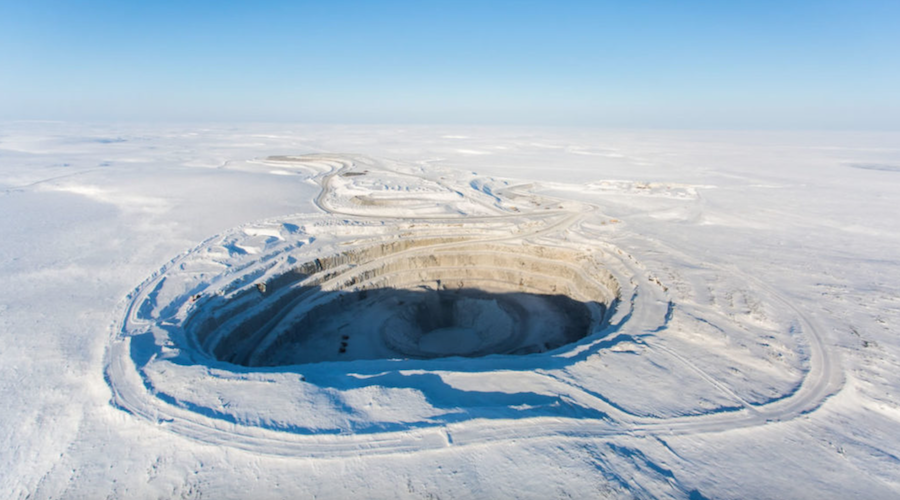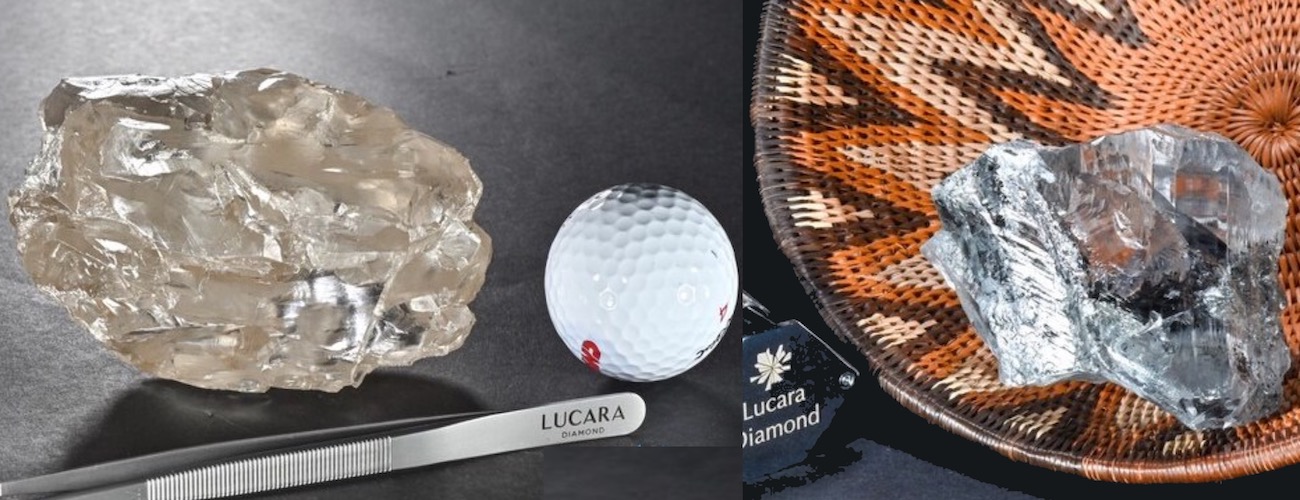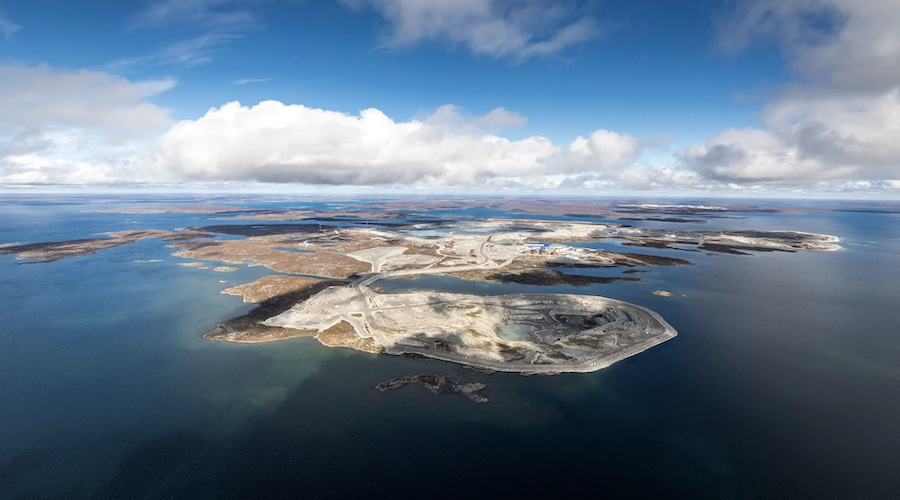Exploration highlights in Qubec during 2004 and early 2005
Mineral exploration spending in Qubec saw a remarkable increase in 2004, compared with the previous year, reaching $204 million for exploration and deposit appraisal combined. Gold exploration accounted for half of that total, at $109 million, a 61% increase compared with 2003. The search for base metals accounted for $61 million (an increase of 46% over the previous year) whereas $27 million was spent on diamond exploration (a 48% increase over 2003). First impressions suggest that 2005 will be another banner year. The Abitibi subprovince (which hosts the majority of producing copper, zinc and gold mines), the James Bay region, and Qubec’s Far North were the sites of major discoveries and important development projects.
Gold
James Bay region
After a decade-long search for mineral deposits in northern Qubec, it appears that Virginia Gold Mines Inc. has uncovered a major gold-bearing structure, the Roberto mineralized system, in the James Bay region, near the Opinaca Reservoir on the Lower Eastmain River. In the summer of 2003, trenching and sampling on the Elonore property (map reference 1, page 21) identified a mineralized outcrop that is the source for a gold-bearing boulder discovered the previous year.
The Roberto mineralized system, which has now been traced by drilling for a lateral distance of 1.2 km and to a depth of 550 m, contains three horizons–Roberto, Roberto Est and Mid-Roberto–and remains open laterally and at depth. Intersections from the 2005 winter drilling program included 23.94 g/t Au over 3.25 m in the Mid-Roberto zone, 20.66 g/t Au over 12.05 m in the Roberto zone and 14.04 g/t Au over 2.5 m in the Roberto Est zone. Mineralization consists of finely disseminated arsenopyrite and pyrrhotite (4-5%) within a potassic alteration zone containing microcline-biotite-tourmaline, hosted in sedimentary rocks. Since June 2005, three drill rigs, along with mechanical stripping, have accelerated the evaluation of the Roberto system and other gold-bearing peripheral zones recently discovered.
The Roberto system represents one of the most significant gold discoveries in Qubec in the last decade, triggering a major staking rush in the region. Several companies have staked vast areas in the Eastmain River greenstone belt and surrounding regions, including Vantex Resources Ltd., Ressources d’Arianne Inc., Beaufield Consolidated Resources Inc., Azimut Exploration Inc. (in partnership with Placer Dome Inc.), Cambior Inc., Eastmain Resources Inc. and Everton Resources Inc., Ressources Sirios Inc. (in partnership with Golden Valley Mines Ltd.) and Canadian Royalties Inc.
Abitibi Greenstone Belt
In September 2004, Noranda Inc. (now Falconbridge Ltd.) and Alexis Minerals Corp. announced a gold discovery on the Noralex property (2), northwest of the Cadillac mining camp. Drilling intersected the Young Buck zone where mineralization is associated with highly altered and quartz-veined tonalite containing coarse-grained pyrite. Drill intercepts have included 1.64 g/t Au over 24.5 m. This mineralization is thought to be similar to Cambior’s Doyon gold mine located 10 km to the southeast. Two other gold zones have also been discovered on the property. In the same area, at Cambior’s Westwood project (3), an exploration drift from the Doyon mine that is being driven to two mineralized zones 2.5 km to the east, had reached 894 m at the end of the first quarter of 2005. Inferred resources for the Westwood and North Corridor zones are 8.6 million tonnes at 5.2 g/t Au.
Another hot spot for gold exploration in Qubec is the Urban-Barry greenstone belt in the Abitibi region, where extensive drilling on the Windfall Lake property (4) by Noront Resources Ltd. has identified a stockwork zone of quartz-pyrite-gold mineralization within highly altered and deformed felsic volcanic rocks. Drill intercepts include 4.0 g/t Au over 13.5 m. Immediately to the north, on the Windfall project (5), drilling by Murgor Resources Inc. and Freewest Resources Canada Inc. has identified three gold zones–F-11, F-17 and F-51. Drill intersections include 11.91 g/t Au over 17 m for the F-11 zone, which consists of pyrite-magnetite mineralization within strongly altered rhyolitic flows. The F-17 zone contains silica replacement zones and quartz-tourmaline veins with intersections of up to 10.46 g/t Au over 11.0 m.
After a lull in the late 1990s and the early part of this decade that coincided with low gold prices, advanced exploration projects in the Abitibi Greenstone Belt are now making a strong comeback, any number of which could very well become the next producing gold mines in Qubec. Here are some of them.
Following the completion of a positive feasibility study in early 2005, Aurizon Mines Ltd. has started sinking a 810-m shaft in the West Mine area of the Casa Berardi project (6). Extensive underground drilling and drift development is underway. Probable reserves stand at 4.9 million tonnes grading 5.96 g/t Au, indicated resources at 1.6 million tonnes at 9.95 g/t Au, and inferred resources at 5.6 million tonnes grading 6.5 g/t Au.
Near Val-d’Or, Agnico-Eagle Mines Ltd. has rehabilitated mining infrastructures on the Goldex property (7). Following a $10-million exploration and deposit appraisal, a 16,522-tonne bulk sample extracted from underground workings returned a grade of 2.78 g/t Au. Construction of the new mine (1.6 million oz of gold in probable reserves) has been approved, with commercial production expected in 2008 at the rate of 170,000 oz of gold per year.
In the same area, Wesdome Gold Mines Inc. is currently conducting a major drilling and exploration drift development program at the former Kiena Mine (8) (see p.14). Drilling is concentrated on the VC and 388 zones. A decision on restarting production is scheduled for the second half of 2005.
After an extensive drilling program was completed in 2004 on the Aurbel property (9), located 10 km east of Val-d’Or, Alexis Minerals Corp. released a mineral resource estimate for the Lac Herbin zone and zone II of 1.07 million tonnes grading 7.26 g/t Au. An underground exploration program is planned for 2005.
Near Malartic, Richmont Mines drove an exploration ramp on its East Amphi property (10) to a vertical depth of 200 m and conducted underground drilling. Resources are now evaluated at 0.93 million tonnes at 6.05 g/t Au in the measured and indicated category, and 0.94 million tonnes at 5.72 g/t Au in the inferred category. A decision concerning the start-up of commercial production will be taken in the second half of 2005.
Farther west, Agnico-Eagle Mines launched an extensive program on the Lapa property (11), which includes sinking an 830-m-deep exploration shaft, underground development, drilling and metallurgical testing. Shaft-sinking work commenced in October 2004. Combined reserves and resources of the Contact zone are estimated at 4.9 million tonnes at a grade of 8.23 g/t Au.
Halo Resources Ltd. and Mtanor Resources Inc. started a 12,500-m underground drilling program at the former Bachelor Lake gold mine (12), located near Desmaraisville. The most recent results are extremely encouraging, including a 3.77-m section grading 22.19 g/t Au from the Main zone (see p. 6).
Copper-Zinc-Nickel-PGE
Abitibi Greenstone Belt
The most significant base metal discovery in Qubec in the past several years occurred in early 2005 in the Rouyn-Noranda mining camp, less than 2 km southwest of the past-producing Ansil mine. In March, Alexis Minerals and Noranda/Falconbridge announced the first results from the West Ansil project (13) (see p. 6). A diamond drill hole cut a 52.70-m section of sulphide mineralization that returned 3.57% Cu, 0.25% Zn, 7.72 g/t Ag and 0.52 g/t Au. A second zone assayed 5.3% Cu, 0.07% Zn, 9.16 g/t Ag and 2.32 g/t Au over 10.80 m. Further work including geophysical and geochemical surveys and additional diamond drilling is planned by the companies.
Late in 2004, Ale
xis and Noranda had announced the discovery of massive sulphide mineralization on the Montbray property (14), situated 16 km southwest of the West Ansil project. These very encouraging results are part of a $5-million exploration campaign planned by the partners in the Rouyn-Noranda camp for 2005, and a similar one is planned for 2006. The companies hold the majority of the mining titles in the area. Falconbridge relies on its advanced 3-D modeling technique that integrates geological, geophysical and geochemical data to develop exploration targets. The Alexis/Falconbridge joint venture has identified nearly 100 targets in the Noranda camp. Elsewhere in the Rouyn-Noranda region, Breakwater Resources Ltd. permanently closed the Bouchard-Hbert mine (15) in February 2005.
Late in 2004, Noranda/Falconbridge discovered a massive sulphide zone on its Renaissance property (16) south of Matagami. A diamond drill hole returned 14.81% Zn, 1.65% Cu, 36.4 g/t Ag and 0.68 g/t Au over 9.5 m. Six additional holes were completed on the zone since then, and a number of these cut sulphide mineralization. Further work will include widely spaced holes targeting the synvolcanic fault associated with the newly discovered mineralization.
In May 2005, Alexis Minerals and Novicourt Inc. announced the discovery of copper-zinc mineralization at depth on the Louvex property (17), located near Aur Resources’ Louvicourt mine, east of Val-d’Or. Two diamond drill holes cut alteration zones with stringer sulphides over widths of 250 and 800 m, 1,000 m to the southwest and 750 m below the Louvicourt mine. Best results were 1.14% Cu over 13.5 m, including a 3.0-m section grading 3.73% Cu. This discovery may renew interest for VMS exploration in the predominantly gold-rich Val-d’Or mining camp.
In the Chibougamau area, Campbell Resources Inc. began commercial production at the Copper Rand mine (18) in early 2005. Measured and indicated resources are 1.9 million tonnes at 1.55% Cu and 3.33 g/t Au.
Ungava and Grenville areas
Three years ago, Canadian Royalties Inc. initiated an important staking rush in the Ungava Trough in Qubec’s Far North, following the discovery of nickel, copper and platinum group elements (PGEs) mineralization south of Falconbridge’s Raglan mine, which began production in 1998 (see p. 10). Today, more than 20 companies are actively looking in this remote region, and results continue to be very encouraging. Work carried out by Canadian Royalties on its properties has significantly increased the size and metals contents of mineral resources on the Mesamax (19), Mequillon (20) and Expo NE (21) deposits. Elsewhere in the area, Anglo American Exploration (Canada) Ltd. and Knight Resources Ltd. announced the discovery of the Red zone and zone 111 on their West Raglan property (22). Goldbrook Ventures Inc. has had encouraging results at its Belanger project (23). Partners Golden Valley Mines and Little Mountain Resources Ltd. identified two mineralized zones on their West Shoot Out property (24). Following the success of the 2004 exploration season, the majority of these companies have planned important exploration programs on their respective properties.
In the western segment of the Grenville Province north of Mont-Laurier, Matamec Exploration Inc. obtained significant results during a winter 2005 drilling campaign on its Vulcain property (25). The best intersection, obtained underneath the South Pit of the old Lac Renzy mine, was 1.93% Ni, 4.09% Cu, and 0.13% Co over 2.96 m.
Diamonds
Since starting in 1996 to explore for diamonds in Qubec, the Soquem Inc./Ashton Mining of Canada Inc. joint venture has surveyed a large swath in northern Qubec (see p.17). Most of their exploration activities are now concentrated on the Foxtrot property (26), in the Otish mountains region, that contains the Renard cluster in which the core area hosts six kimberlite intrusions. Five of the kimberlites (Renard 2, 3, 4, 65 and 9) have an estimated total tonnage of 22.4 million tonnes with individual grades ranging from 22 to 123 carats/hundred tonnes. A calculated modeled value of US$88/carat has been estimated. In addition to the adjacent diamond-bearing Lynx kimberlite sill, a new set of kimberlite dikes has been identified 1 km north of the core area.
The Renard cluster represents one of only a handful of promising advanced diamond exploration projects in Canada. To the southwest, on the adjacent Portage property (27), a nine-hole drill program by Majescor Resources Inc., located at the head of a dispersion train containing diamond-bearing kimberlite boulders, intersected a 0.5-m-thick kimberlite sill.
Architectural and industrial stones and industrial minerals
A growing number of architectural and industrial stone quarries are coming into production in the southern part of the province. Qubec has seen a significant increase in the number of projects aimed at finding ever-more-beautiful varieties of stone. In 2005, a number of companies and prospectors are carrying out exploration and development work targeting these substances, including A. Lacroix Et Fils Granit Ltd., Granijem Inc., and Namca Inc. Magnesian and dolomitic agricultural lime, magnetite-ilmenite, and graphite deposits are other sought-after commodities in southern and central Qubec.
Exploration opportunities
The Opinaca Reservoir sector in the James Bay region of Central Qubec has become one of the most important, if not the most important gold play in eastern Canada. Companies are scrambling to position themselves in this vast, under-explored territory, with exploration campaigns for the 2005 summer season.
The recent increase in the prices of molybdenum and uranium has renewed interest for those metals in Qubec, and companies are taking another look at known occurrences in the Grenville Province and elsewhere. Paleoproterozoic sedimentary sequences in the Otish Mountains area and the Sakami Formation in the James Bay region are other potential targets for uranium exploration.
Base metal exploration in established mining camps such as Noranda and Matagami has resulted in a number of significant discoveries over the past year. It seems that despite nearly a century of exploration, mining camps such as Matagami and Noranda still have a few surprises for explorationists. At the PDAC Convention in March 2005, the Ministry of Natural Resources and Wildlife presented the results of its Assessment of the Potential for Volcanogenic Massive Sulphide (VMS) Deposits in Abitibi, which identified more than 150 new exploration targets for copper-zinc mineralization in the Abitibi and Frotet-Evans greenstone belts. The study’s release generated significant interest by the mining community, with 31 targets being staked in the weeks that followed.
Pierre Doucet (pierre.doucet@mrnf. gouv.qc.ca) is the regional geologist for Rouyn-Noranda and James Moorhead (james.moorhead@mrnf.gouv.qc.ca) is the regional geologist for Val d’Or, with Qubec’s Ministry of Natural Resources and Wildlife.





Comments